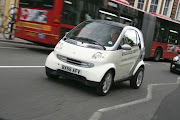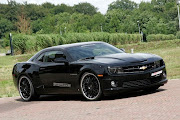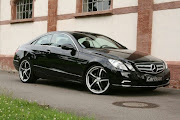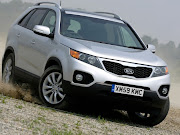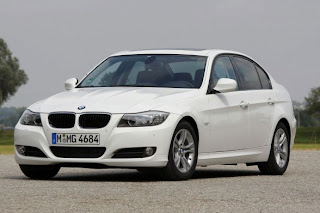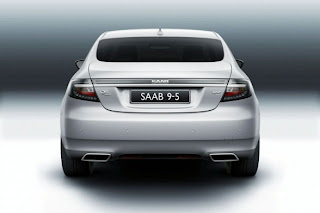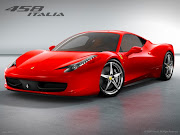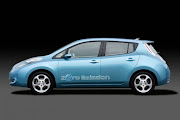Range Rover Vogue 2010 - Front Angle Picture
The next generation 2010 Range Rover Vogue is due to arrive in Australia mid-September, offering even higher levels of craftsmanship and refinement. Revealed earlier this year the 2010 Range Rover Vogue features new engines deliver more power and improved fuel economy, whilst state-of-the-art Adaptive Dynamics technology further improve the Range Rover Vogue’s peerless ride quality.
Range Rover Vogue 2010 - Front PictureRange Rover Vogue 2010 - Front Side Picture
On the inside the 2010 Range Rover Vogue incorporates revolutionary new technologies, such as the world’s first automotive application of a dual view touch screen, allowing driver and front seat passenger to view two different images simultaneously. The system uses patented Parallax Barrier technology to alternately hide and reveal columns of pixels to the left and right hand views of the screen. This means that the passenger can enjoy a DVD movie while the driver follows navigation instructions, all on the same screen.
The traditional instrument cluster has also been replaced by a fully configurable 12″ TFT screen which presents all essential driver information via cleverly designed ‘virtual’ dials and graphical displays.
To complete the package, the 2010 Range Rover Vogue benefits from a series of enhanced active safety aids including Adaptive Cruise Control, Blind Spot Monitoring, Automatic High Beam Assist and a patented reverse Tow Assist function. In addition, a surround camera system utilises five digital cameras to relay a near 360-degree view to the touch-screen, allowing for easier parking, towing and off road manoeuvring.
Overall these enhancements to Range Rover Vogue reinforce its position as Land Rover’s most complete luxury 4×4. Land Rover’s flagship has been comprehensively updated to deliver more refined and efficient performance, along with the ultimate in interior comfort and craftsmanship.
“The 2010 Range Rover Vogue is a considerable step forward for what is already regarded as the one of the world’s most complete luxury vehicles. New engines deliver formidable power, efficiency and customary Range Rover Vogue refinement, and new technologies, such as the dual view screen, deliver a world first. Like its legendary predecessors, the 2010 Range Rover Vogue continues to set the pace,” says Roger Jory, Land Rover Austraila’s General Manager.
Under the bonnet the 2010 Range Rover Vogue features two all new efficient and powerful petrol engines. The highly acclaimed and refined TDV8 diesel engine is carried over:
All-new 5.0 litre LR-V8 supercharged petrol engine:
375kW (29% increase) and 625Nm (12% increase)
Fuel consumption 14.9l/100km (7.3% reduction) and CO2 348g/km (7.4% reduction)
All-new 5.0 litre LR-V8 naturally aspirated petrol engine:
276kW (25% increase) and 510Nm (16% increase)
Fuel consumption 14.0 l/100km (6.9% reduction) and CO2 326 g/km (7.4% reduction)
The acclaimed 3.6 litre LR-TDV8 engine is retained:
200kW and 640Nm
Fuel consumption of 11.1l/100km and CO2 emissions of 294 g/km
Mis-fuelling device (petrol fuel guard system)
The 2010 Range Rover Vogue is available in three diesel and two petrol engine specification levels: TDV8, TDV8 Luxury, TDV8 Autobiography, 5.0 V8 and 5.0 V8 Supercharged Autobiography. The standard features for each of the variants are as follows:
Range Rover Vogue TDV8 and 5.0 V8
Although the TDV8 and 5.0 V8 may be the Rover Vogue 10MY entry level models, they in fact feature a high level of standard specification. The TDV8 has a Recommended Price (before statutory and delivery charges) of $155,000 and 5.0 V8 is priced at $158,000 (before statutory and delivery charges. The standard specification for both variants is as follows:
6-Speed adaptive automatic gearbox with CommandShift®
Cruise control
Terrain Response™ and Electric Park Brake
Permanent four wheel Drive
Centre electronic differential with low range transfer box
Electronic cross linked air suspension with automatic load leveling and multiple modes, access, normal, off-road, extended height
Power assisted, speed proportional steering (PAS)
Acoustic Windscreen and front side glass
Heated windscreen
Electric sunroof – tilt/slide glass
Rain sensing wipers and automatic headlamps
Exterior mirrors – power adjustable, heated and Powerfold
Door puddle lamps and footwell lamps.
Rear view camera
Headlamps – automatic and rain sensors
Bi-Xenon headlights with headlamp powerwash
Park Distance Control – front & rear
Towing preparation, crossmember & blanking plug (Tow
19″ 7 spoke alloy wheels, with locking wheel nuts and full size spare
Electric windows with one touch open/close
Climate control – automatic with air filtration
Powered Blenheim leather front seats with driver memory and easy entry/exit function
Leather steering wheel, with Multi Function switches and cruise control
Leather covered steering wheel and gear knob, facia topper, seat facings, armrests and cubby box lid (Type of Leather Model Dependent)”
Veneer – Burr Wood (Satin Finish) 10 piece wood setSill Tread Plates – with Range Rover Lettering 12.3 inch TFT-LCD Virtual Instrument Panel (Thin Film Transistor)
Harmon Kardon audio system with DSP (11 speaker system)
Portable Audio Interface with USB, iPod and jack plug interface
Hard drive navigation system with 7 inch high resolution Touch-screen and Hybrid TV
Bluetooth® telephone connectivity and integration
Full length curtain side air bags, driver and passenger airbag, driver knee airbag, front seat pelvicand thorax airbags
Alarm System – Volumetric alarm plus tilt sensor & Battery Backed Sounder Stability
Control Systems – Electronic Brake-force Distribution (EBD), All-terrain Anti-Lock Braking System (ABS), Four-wheel
Electronic Traction Control (ETC), Dynamic Stability Control (DSC), Cornering Brake Control (CBC), Electronic differential control, Emergency Brake Assist (EBA), Understeer control logic, Hydraulic rear brake boost, Electronic brake pre-fill, Roll Stability Control (RSC), Trailer stability assist and Hill Descent Control (HDC) with Gradient Release Control (GRC)
Range Rover Vogue TDV8 Luxury
The next specification level is theTDV8 Luxury with a Recommended Price (before statutory and delivery charges) of $179,500. In addition to the features found on the TDV8 and 5.0 V8 models, the TDV8 Luxury also comes with the following as standard specification:
Climate control windscreen and front side glass
Automatic dimming exterior door mirrors
Adaptive Bi-Xenon headlights
20″ V spoke alloy wheels (in lieu of 19″ 7 spoke alloy wheels)
Ski bag and luggage net
Perforated Oxford leather seats with heated/cooled front & heated rear seats
Heated leather steering wheel, with Multi Function switches and cruise control
Veneer – Burr Wood (Satin Finish) 12 piece wood set (incl console side)
Harmon Kardon Logic 7 audio system – 14 speaker surround sound
Rear Screen Entertainment Pack (includes DVD player, 2 screens, 2 wireless headphones, remote control and AVI panel)
Venture Cam
Range Rover Vogue Autobiography and 5.0 V8 Supercharged Autobiography
The pinnacle of the 2010 Range Rover Vogue range is the Autobiography, available in diesel and supercharged petrol powertrains. The TDV8 Autobiography has a Recommended Price of $208,900 (before statutory and delivery charges) and the range topping 5.0 V8 Supercharged Autobiography $229,500 (before statutory and delivery charges). In addition to the features found on the TDV8 Luxury, the Autobiography variants also come with the following as standard specification:
Dual View Touch Screen
Adaptive Dynamics
Vision Assist Package, includes:
Surround Camera System
Blind Spot Monitoring
Tow Assist
Automatic High Beam Assist
Diamond turned alloy wheels
Perforated Semi-aniline Leather Seat – with heated/cooled front & heated rear seats
Noble grille mesh finish on both front grille and side vents
Supercharged design pack (S/C front grille, side vents with 3 bar design, pedals and front bumper assembly (to include titan painted splitter bar and fog lamp bezels)
Full Leather Facia
Autobiography Leather door panels, including leather wrapped door pocket finishers
Leather Headlining including rear vanity mirrors
Veneer – Burr Wood (Satin Finish) 14 piece wood set (including rear of console)
Sill Tread Plates – Brushed, with Autobiography Insert
Autobiography Luxury Mat with leather trim edging
Rear Electronic Differential (standard on 5.0 V8, option on TDV8)
2010 Range Rover Vogue Recommended Price (before statutory and delivery charges):
TDV8 $155,000
TDV8 Luxury $179,500
TDV8 Autobiography $208,900
5.0 V8 $158,000
5.0 V8 Supercharged Autobiography $229,500
“The Range Rover Vogue remains the consummate luxury 4×4. Its combination of unrivalled all-terrain performance with the ultimate in comfort and refinement, remains a clear industry benchmark,” says Roger Jory, Land Rover Austraila’s General Manager.
2010 Range Rover Vogue – In Detail
All-new LR-V8 engines deliver outstanding performance and efficiency
All-new 5.0-litre LR-V8 design with supercharged and naturally aspirated versions
375kW Supercharged engine has 29 percent more power and 12 percent more torque than previous 4.2-litre engine – whilst reducing fuel consumption on the EU cycle by 7.3 percent and cutting CO2 emissions by 7.4 percent
276kW naturally aspirated engines 25 percent more power and 16 percent more torque than previous 4.4-litre engine – whilst reducing fuel economy on the EU cycle by 6.9 percent and cutting CO2 emissions by 7.4 percent
Multi-hole central spray-guided direct injection is highly efficient – industry first.
High efficiency, 6th generation twin-vortex supercharger
Torque-actuated variable camshaft timing on all four cams in V8 engine – industry first
Camshaft profile switching and variable length inlet manifold optimises power and torque
Reverse cooling improves engine efficiency and speeds cabin warm-up
Class-leading, low-friction design features
Lightweight construction uses recycled materials
“Both versions of the V8 return class leading levels of power and torque combined with reduced fuel consumption and emissions – the supercharged 5.0-litre engine is one of the most fuel efficient in its class. As well as stunning top-end performance, they also deliver the low-end flexibility essential for real-world driving.” Malcolm Sandford, Engine Group Chief Engineer, Land Rover
The 2010 Range Rover Vogue gets an all-new petrol engine line up with a choice of two 5.0-litre LR-V8 units in supercharged and naturally aspirated guise. The two engines were developed in conjunction with Jaguar, which is the first time engines have been designed from the outset with the requirements of both brands in mind. Shared primary objectives included the highest possible torque and fast response from low revs.
Although the basic architecture of both engines is the same for each brand, some changes were needed for the Land Rover engines to satisfy demanding all-terrain requirements. For example, the engines feature a deeper sump to accommodate the extreme tilting angles experienced when driving the Range Rover Vogue off road, and to accommodate the front differential which attaches to it. In addition, belt drives are waterproofed, as are the alternator, air conditioning compressor, power steering pump and starter motor.
The supremely powerful supercharged LR-V8 delivers 375kW and 625Nm of torque, while the naturally aspirated version produces 276kW and 510Nm of torque. Two of the most advanced petrol engines ever built, they are packed with innovative features to ensure that they are also two of the most frugal in their class.
Both derivatives were developed with an emphasis on delivering a smooth, refined and responsive driver experience, with excellent power characteristics. Compared to the current 4.2-litre V8 the supercharged engine increases power and torque outputs by 29 percent and 12 percent respectively.
Direct injection – increased power and torque, lower emissions
One of the key features of the new LR-V8 is an industry first, centrally-mounted, multi-hole, spray-guided fuel injection system, delivering fuel at a pressure of up to 150bar directly to the cylinder. The positioning of the injectors ensures fuel is precisely delivered to the centre of the combustion chamber, maximising air-fuel mixing, and improving combustion control.
Fuel is delivered by twin, high pressure fuel pumps driven via an auxiliary shaft in the all new engine block. Delivery of fuel direct to the cylinder has substantially contributed to improved low speed, dynamic response which is particularly useful off-road while adding to driving pleasure on-road. The charge cooling effects of the direct injection fuel system have allowed the compression ratio of the naturally aspirated engine to be raised to 11.5:1, further improving the engine economy.
During the engine warm-up phase, the combustion system employs multiple injection mode strategies to deliver 50 percent more heat for fast catalyst warm-up and reduced emissions.
6th generation supercharger – quieter and more efficient.
A sixth generation, twin vortex system (TVS) supercharger is fitted to the 375kW engine. A compact Roots-type unit, it feeds air through twin intercoolers which in turn are water-cooled by their own discrete cooling circuit. The high helix rotor design both improves the supercharger thermodynamic efficiency by 16 percent and improves noise quality to the point where the unit is virtually inaudible. The intercoolers reduce the temperature of the pressurised intake-air and so optimise power.
The air intake has been radically redesigned compared to the previous V8. The intake air path is a direct feed to the supercharger inlet from the centrally mounted front throttle body. Air is delivered through twin air boxes which reduce flow loss and further increase efficiency. Mechanically, the new supercharger and its intercoolers are efficiently packaged in the V of the engine to deliver a low overall engine height.
Responsive new transmission
The Range Rover Vogue’s new petrol engines are mated to the revised and super-smooth ZF HP28 6-speed automatic transmission. Its characteristics have been optimised by Land Rover engineers to provide class-leading response, with rapid and refined shifts. The dramatic enhancement of both power and torque low down the rev range on the new engines have made it possible to actuate the transmission’s lock-up clutch much earlier in each gear, reducing slip through the hydraulic torque converter, so helping with the improvements in both fuel consumption and CO2 emissions.
The transmission features an intelligent sport mode, which can sense and adapt transmission characteristics to particular driving styles.
The diesel alternative
For customers who prefer diesel power, the acclaimed 200kW 3.6-litre TDV8 engine continues to be available on the 2010 Range Rover Vogue. It is paired with the smooth and responsive ZF HP26 6-speed automatic.
Enhanced vehicle dynamics – both on and off road
The 2010 Range Rover Vogue benefits from a comprehensive programme of refinements to its vehicle dynamics. The enhancements include features that will improve ride and handling during on-road driving, plus a series of measures that give greater capabilities when driving off-road or when towing.
Unique adaptive dynamics system improves ride and control
The 2010 Range Rover Vogue has an advanced new Adaptive Dynamics system which further improves the Range Rover Vogue’s peerless ride quality with greater refinement and superior body control.
It is the world’s first production system to employ model-based predictive technology that continually optimises damper settings for the widest possible range of conditions. Conventional dampers are replaced by precision DampTronic Valve Technology™ damper units, which incorporate continually adjustable damper valves.
The predictive technology enables damper settings on each wheel to be continuously refined between ’soft’, comfort oriented settings and ‘hard’, firm body control settings; damper pressure on each wheel is monitored 500 times per second. The system optimises the vehicle’s body and ride control, instantly responding to both the demands of the prevailing driving style and of the terrain encountered, in both on and off-road situations.
Braking system gets more power and feel
The Range Rover Vogue is equipped with a new braking system which has been comprehensively updated to provide enhanced stopping power and improved driver feel. The brakes for both the diesel and naturally aspirated vehicles are modelled on the 4-piston opposed calliper performance system from the outgoing Supercharged model. The updated system employs 360mm ventilated front discs with new twin piston sliding callipers made from cast-iron for enhanced pedal feel.
The rear features 350mm ventilated discs with lightweight aluminium single piston sliding callipers.
The braking system for the Supercharged model has been developed in conjunction with performance brake specialists Brembo™. This system employs 380mm ventilated front discs with unique lightweight aluminium six-piston opposed action monoblock callipers. 365mm ventilated discs with single piston sliding callipers are fitted at the rear.
Greater control and safety around bends
A refinement to the stability control system helps automatically slow the vehicle if taking a bend too fast, thus enhancing driver control.
Enhanced Understeer Control interfaces with the brake modulator and Powertrain control module. If the speed is too great for engine torque reduction to control the vehicle, automatic braking intervenes to reduce the vehicle speed, with braking pressure applied according to the severity of the situation. At decelerations in excess of 0.7g the brake lights are automatically applied to warn following traffic.
This feature is complemented by the new Roll Stability Control system, which is designed to intervene in the unlikely case of an extreme situation in which the possible onset of a rollover is detected. In such situations, the system is designed to take over and perform very rapid, wheel specific braking, to help reduce speed and marginally widen the cornering radius.
Improved performance and stability off-road
The award winning Terrain Response™ system is subject to a whole series of improvements for 10MY including enhanced capabilities when tackling challenging terrain like sand or large rocks.
For soft sand – one of the most power-hungry surfaces – ’sand launch control’ has now been introduced, which makes for noticeably easier drive-away. New, speed-dependent wheel-slip targets for the traction control system permit only very limited initial wheel-slip, helping to prevent the wheels digging down into the sand.
Revisions to the rock crawl program improve brake and traction control response times, helping to reduce the wheels rolling in an unintended direction when traversing boulders and giving a more composed drive through rocky terrain.
Land Rover’s much-acclaimed Hill Descent Control system is enhanced on the latest Range Rover Vogue with the addition of Gradient Release Control. This inhibits the initial rate of acceleration when descending very steep inclines, to increase control and reduce the potentially alarming lurch which can occur when braking is released at extreme angles.
More stable towing
For safer and more stable towing, the 2010 Range Rover Vogue incorporates Trailer Stability Assist. This system detects trailer oscillations by monitoring key vehicle behaviours, such as uninvited steering movements and slight vehicle swing in response to trailer behaviour. In these circumstances, the system can initiate engine torque reduction and braking interventions to help bring the towing back under control.
Classic Range Rover Vogue style with contemporary details
“We have introduced a number of more contemporary design elements on the 2010 Range Rover Vogue, but have been careful not to disturb the vehicle’s classic proportions and unique silhouette. The refined detailing and cleaner surfaces of the 10MY retain the timeless and noble qualities which are traditional hallmarks of Range Rover Vogue design.” Design Director, Gerry McGovern
The 2010 Range Rover Vogue features subtle revisions to the exterior styling, introducing some attractive new design elements which enhance the classic Range Rover Vogue style with more contemporary detailing.
New headlights feature the Range Rover Vogue’s trademark inter-locking circle design, but are more clearly visible, day or night, with LED lamp technology. The headlights are marginally shallower, and ‘bookend’ a deeper, more upright mesh grille which follows the distinctive style introduced on the current supercharged model. A black and silver Land Rover badge replaces the traditional green and silver design.
A new bumper completes the smoother, more sculpted front end, reflecting the clean surface integration which is now characteristic of Range Rover Vogue design. The fog lamps are relocated from the bumper skin to the lower front air-intake.
The side of the vehicle features new ‘three-stripe’ LED indicators and redesigned three-section fender vents. The same design theme is adopted by the rear LED light clusters, which incorporate ‘three-stripe’ directional indicators.
Interior showcases luxurious materials and revolutionary technologies
Superbly crafted new materials and some revolutionary display technologies help to improve a cabin this is already widely regarded as one of the automotive world’s finest.
To further enhance the premium interior ambience, the 2010 Range Rover Vogue introduces new luxury grade European leather trim for the headlining, pillar and door casings. Facia buttons now feature a satin chrome-plated finish, which are beautifully highlighted by the Range Rover Vogue’s upgraded waterfall interior lighting. High quality black satin and natural wood finishes complete the sumptuous feel of the interior architecture.
‘Virtual’ dials and graphic displays replace traditional instruments
One of the major innovations in the 2010 Range Rover Vogue is found in the instrument cluster. Here, traditional physical instruments are replaced by a fully configurable 12″ TFT screen which presents all essential driver information via cleverly designed ‘virtual’ dials and graphical displays.
The system’s message centre (the area between rev counter and speedometer) can be customised by the driver to display personal prioritised information, from system warnings, outside temperature and vehicle information to less critical data such as audio and telephone displays.
The message centre also relays off-road information, such as steering angle, wheel articulation, suspension settings and Terrain Response™ settings. Fingertip control of settings and menus on the TFT screen is provided by an updated steering wheel which incorporates a five-way controller.
World first ‘dual view’ screen technology
The 2010 Range Rover Vogue is the first to feature ‘dual view’ infotainment touch screen technology. The display allows the driver and passenger to view completely different images simultaneously. This means that the passenger can enjoy a DVD movie while the driver follows navigation instructions, all on the same screen.
The system uses patented Parallax Barrier technology to alternately hide and reveal columns of pixels to the left and right hand views of the screen. The display comes with a specially designed agar coating to help prevent sunlight bleaching.
The screen retains all of the touch-screen functionality of the previous display, but the graphics and menus have been redesigned for easier and more intuitive operation, allowing the number of ‘hard’ buttons around the screen to be reduced by a third. As before, functions such as satellite navigation, DVD video, and audio systems can be controlled via the display.
An updated voice control system with enhanced voice recognition software complements the touch screen, and can be used to control a range of entertainment and comfort features such as the audio system and climate control.
Advanced vehicle technologies enhance convenience and safety
“The technologies built into the 2010 Range Rover Vogue are designed to improve convenience and safety, reducing the stress of driving in modern motoring conditions, on all terrains. With technology sharing the workload, the result is a more relaxed, alert driver.” Paul Walker, Chief Programme Engineer
The 2010 Range Rover Vogue incorporates a comprehensive selection of advanced vehicle technologies which enhance convenience and improve active safety for the driver.
Adaptive Cruise Control
The 2010 Range Rover Vogue features Land Rover’s Adaptive Cruise Control system (ACC) for the first time. The system employs a 76GHz scanning radar to locate vehicles moving in the same direction, and is designed to maintain optimal vehicle speed by using acceleration, deceleration and braking to keep a specified distance from the traffic ahead.
ACC comes with four driver-selectable settings, designed to suit individual driving style and traffic / road conditions. The driver can select a ‘headway’ of between 1 to 2.2 seconds, with a default setting of 1.8 seconds; this equates to a 50 meter distance from the vehicle ahead when travelling at 100km/h. The system is designed to operate at speeds of up to 180km/h.
Vehicles fitted with the ACC system also benefit from a new Advanced Emergency Brake Assist system working in conjunction with the Forward Alert System’s radar, this primes the vehicle’s braking system, and even initiates braking in extreme circumstances if a collision is judged possible. Valuable improvements in braking distances have been recorded in the testing of this system.
Updated infotainment systems
A new hard-drive navigation system provides faster route calculation, larger area map coverage and improved reliability. The navigation system adopts an improved navigation structure which now also features ‘towards guidance’. This supplements the junction map and icon-based information with details of the actual road signage viewed by the driver along the route.
The new Portable Audio Interface allows connectivity to an array of personal audio storage devices, USB sticks and MP3 players, enabling the various devices’ functions to be accessed and controlled via the facia-mounted touch-screen system. One of the connectivity ports is a dedicated iPodTM point made exclusively by Land Rover, for continued functionality in extreme driving conditions, by helping to prevent the device coming loose from the socket.
Enhanced safety and visibility
The 2010 Range Rover Vogue has a blind spot monitoring system available, which uses side-mounted radar sensors to detect vehicles and other solid objects in the vehicle’s blind spot area. If an object is detected, a bright amber warning icon is illuminated in the driver’s door mirror.
A new surround camera system supports easier parking, towing and off road manoeuvring. It features five digital cameras which relay a near 360-degree view to the touch-screen display. The cameras function immediately the vehicle is started, and can be used at speeds up to 18km/h, with options for selecting and zooming in to assist with close quarter parking and with towing.
The Patented ‘reverse tow assist’ function (selected from the touch screen menu) helps perform accurate towing manoeuvres. The wide field of views on the side cameras give a clear view of the reversing trailer and the images are electronically manipulated to provide an undistorted view. Guide lines overlaid on the rear camera image illustrate both the vehicle and trailer’s trajectory and move in line with steering inputs, making it easier for the driver to predict where the trailer will move to, before performing the reversing manoeuvre. Specific characteristics such as type of trailer, number of axles and width guides can be fed into the system to enhance the system outputs.
The Range Rover Vogue’s front headlights incorporate high beam assist technology. This can automatically switch on high beam headlights where external light levels are below the system’s threshold. Importantly, the system is also designed to detect preceding and approaching traffic, and in a split second will automatically switch back to low beam to avoid dazzling others.
All-new electrical architecture
The performance of many of the 2010 Range Rover Vogue’s advanced technologies is enhanced by a completely new electrical architecture which supports more efficient integration between the various systems. Information is shared between electronic components via a high speed Controller Area Network (CAN), with a fibre optic Media Orientated System Transport (MOST) network controlling the modules of the infotainment system, enhancing reliability and saving weight.
e-TERRAIN TECHNOLOGIES boost economy and lower CO2 emissions
Under the banner of e_TERRAIN TECHNOLOGIES, Land Rover is implementing a range of measures to reduce fuel consumption and CO2 emissions, without compromising Range Rover Vogue’s refinement or renowned all-terrain capabilities. Both the new LR-V8 5.0 and LR-V8 supercharged petrol engines were designed from the outset to deliver class-leading fuel economy and improved low-end torque.
The LR-V8s’ new high pressure, spray guided direct injection system optimises combustion while the new variable camshaft timing system, camshaft profile switching and variable inlet manifold of the naturally aspirated engine all join forces to ensure the engine is optimised for fuel efficiency throughout the range.
The supercharged engine is also fitted with the new variable camshaft timing system as well as a sixth generation, twin-vortex supercharger whose high-helix rotor design improves its thermodynamic efficiency by 16 percent. Faster warm-up thanks to the new cooling system also improves fuel economy as do the low friction design features.
The new engines have been also been optimised for low-end torque as well as economy, making it possible to activate the lock-up clutch of the ZF HP-28 automatic transmission at lower speed. This reduces ’slip’ in the hydraulic torque converter improving both fuel consumption and CO2 emissions. The higher torque at lower rpm also enables longer gearing for more economical cruising.
The Range Rover Vogue incorporates several other energy saving features too. New front wheel deflectors reduce drag and an Intelligent Power Management System includes smart regenerative charging, so whenever possible the alternator charges the battery when it is most economical to do so, such as when the vehicle is coasting rather than accelerating.
 2010 Range Rover Vogue - Interior Picture
2010 Range Rover Vogue - Interior Picture 2010 Range Rover Vogue - Rear Side Picture
2010 Range Rover Vogue - Rear Side Picture
Range Rover Vogue 2010 - Side Angle Picture
